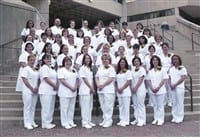Talking with Older Patients – Effective Communication Is Key in Caring for Older Adults
During the past century, the nature of old age has changed dramatically. In the early 1900s, average life expectancy at birth was about 49 years — today, it is nearly 80 years. With longevity, however, comes the sobering news that older people may live for years with one or more chronic, potentially disabling conditions. This means they will have an ongoing need for medical services.
Good communication is an important part of the healing process. Effective doctor-patient communication has research-proven benefits: patients are more likely to adhere to treatment and have better outcomes, they express greater satisfaction with their treatment, and they are less likely to file malpractice suits.
Studies show that good communication is a teachable skill. Medical students who receive communication training improve dramatically in talking with, assessing, and building relationships with patients. Time-management skills also improve.
Interpersonal communication skills are considered so important that they are a core competency identified by the Accreditation Council on Graduate Medical Education and the American Board of Medical Specialties. With older patients, communication can involve special issues. For example:
- How can you effectively interact with patients facing multiple illnesses and/or hearing and vision impairments?
- What’s the best way to approach sensitive topics, such as driving abilities or end of life?
- Are there best practices to help older patients experiencing confusion or memory loss?
The process of aging may be troubling for older adults. It can be especially hard for people who were generally healthy and could bounce back quickly from an illness. Experts observe that Baby Boomers bring different expectations, experiences, and preferences to aging than did previous generations. For instance, some Boomers will want to participate actively in their healthcare and work collaboratively with clinicians to determine what treatments might best work for them. They frequently go online to search for health information.
Stereotypes about aging and old age can lead patients and healthcare professionals alike to dismiss or minimize problems as an inevitable decline of aging. What we’re learning from research is that aging alone does not cause illness, nor does it automatically mean having to live with pain and discomfort.
Many suggestions for improving communication may seem, at first glance, to be time-consuming; however, an initial investment of time can lead to long-term gains for clinicians. You may get to know your patient’s life history over the course of several visits rather than trying to get it all in one session, for example.
Remember, no single characteristic describes an older patient. Older patients are not all the same. You may see frail 60-year-olds and relatively healthy 80-year-olds. Your patients probably are culturally diverse, with varying socioeconomic and educational backgrounds. Some are quite active, while others may be sedentary. Each person has a different view of what it means to be old.
Ageism can work both ways. Doctors can make assumptions about their older patients, while older people may unwittingly assume the stereotypes of old age. Those with treatable symptoms may dismiss their problems as an inevitable part of aging and not get medical care. As a result, they may suffer needless discomfort and disability. Some may not even seek treatment for serious conditions.
Learning — and using — effective communication techniques may help you build more satisfying relationships with older patients and become even more skilled at managing their care.

